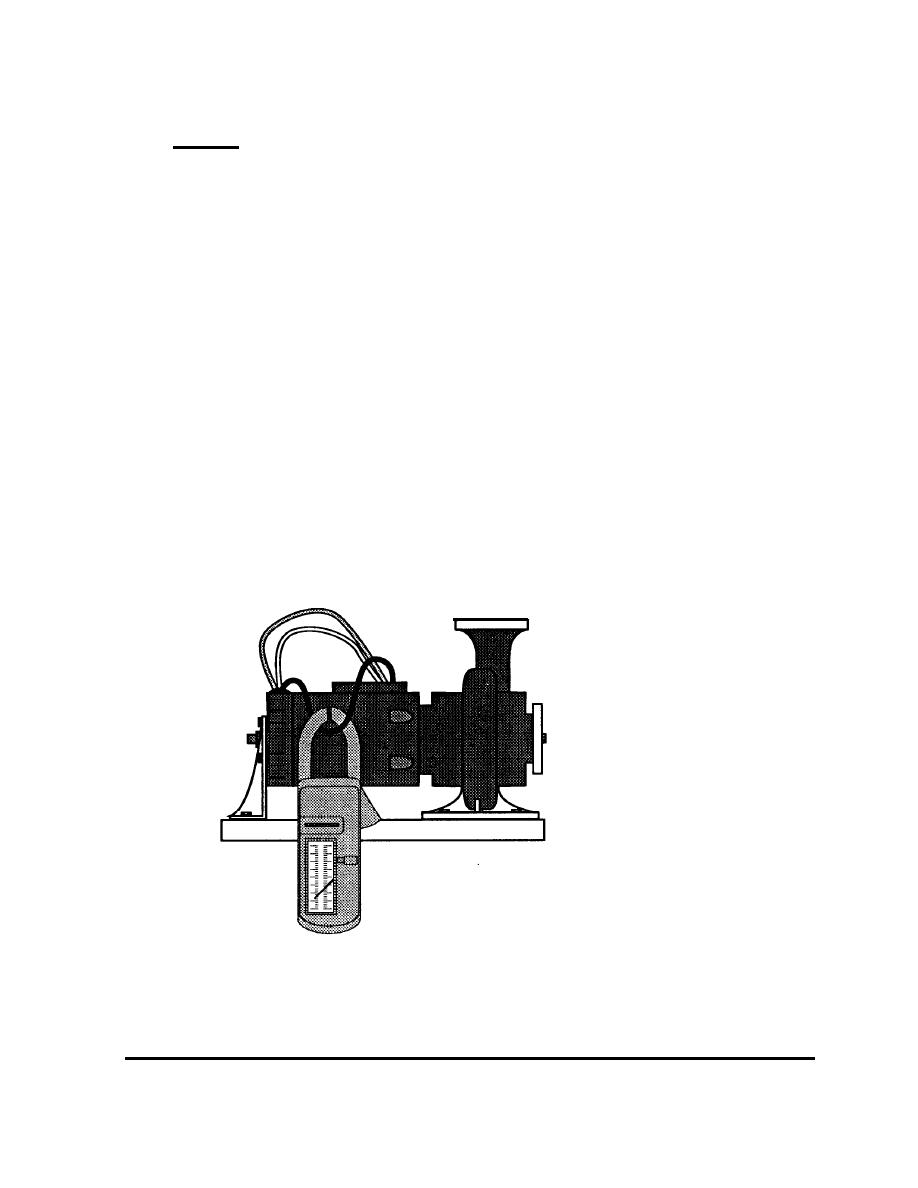

Custom Search
|
|

|
||
 4.3.4 Pumps. Many "bad" pumps are actually not. Before draining fluid and tearing
down a pump, make sure the piping loop is free of air, no valves are closed, and
that the pump is getting electrical power.
Pump noise will indicate if the shaft is out of alignment, or the bearings are worn. If
the seals or gaskets are leaking, you can see the evidence. Check the service
record for the system: has the motor received necessary lubrication?
Check the system flow rate. This may be possible with a flow meter, a flow setter
with differential pressure gauge, or by comparing the pressure difference across the
pump with the manufacturer's pump curve. (To covert PSI into feet of head, multiply
PSI by 2.3.)
The next step should be to use a snap-around ammeter to measure the pump
motor's current draw during operation (Figure 4-6). If you know the correct
amperage draw for the pump, you can quickly identify a number of problems. In
some cases, it may be possible to avoid draining the system and tearing down the
pump.
FIGURE 4-6
Using an Ammeter
on a Solar Pump
TROUBLESHOOTING
123
4.3 TROUBLESHOOTING OPERATIONS
|
 |
|
 |
||